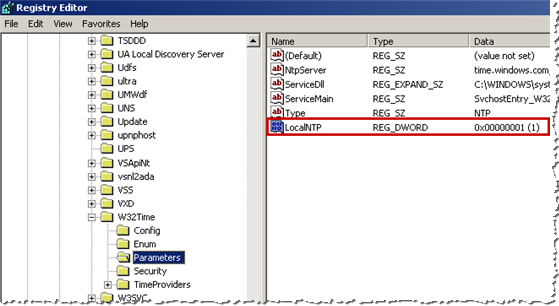High Noon Game Farm. 765 likes 19 talking about this. My farm is located in the beautiful Appalachian foothills of southeastern Ohio. For further information about my farm and gamefowl, you are. Located in Princeton, Minnesota, Oakwood Game Farm hatches over 300,000 game birds annually. Oakwood Game Farm specializes in raising Chinese Ringneck Pheasants and Chukar Partridges for training dogs and to populate private lands and shooting preserves. It also sells tens of thousands of day old game bird chicks, and ships them nationwide. Bhs game farmbhs game farm blog. Welcome to the webpage of BHS Game Farm, I have a small chicken farm on which I raise quality game fowl, I firmly believe in quality over quantity!! My flock of fowl are NPIP certified pollorum/typhoid clean, and also Avian Influenza ( Bird Flu ) Clean, they are tested for the Avian Flu every 3 months, and pollorum/typhoid once per year. Shooting game over piles of feed or inside fences isn't fair chase. Fencing game results in unnatural genetics with animals unable to move freely. Providing easy game on farms lulls hunters into thinking all is well and wild habitat doesn't need to be protected, defended or enhanced. Game farms ignore less popular species.
Type regedit in the Windows search box on the taskbar and press Enter. If prompted by User Account Control, click Yes to open the Registry Editor. The Windows Registry Editor window should open and look similar to the example shown below. The registry also provides a window into the operation of the kernel, exposing runtime information such as performance counters and currently active hardware. Cubefield unblocked. You can use the Registry Editor to make changes to your computer's registry entries, which can be useful for hardware troubleshooting and virus removal.
- Registry Editor Windows Server 2012 64-bit
- Registry Editor Windows Server 2012 Product
- Registry Editor Windows Server 2012 Download
This article describes how to view the Windows registry by using 64-bit versions of Windows.
Original product version: Windows 10 - all editions
Original KB number: 305097

Summary
The registry in 64-bit versions of Windows is divided into 32-bit and 64-bit keys. Many of the 32-bit keys have the same names as their 64-bit counterparts, and vice versa.
The default 64-bit version of Registry Editor (Regedit.exe) that is included with 64-bit versions of Windows displays both 64-bit keys and 32-bit keys. The WOW64 registry redirector presents 32-bit programs with different keys for 32-bit program registry entries. In the 64-bit version of Registry Editor, 32-bit keys are displayed under the HKEY_LOCAL_MACHINESoftwareWOW6432Node registry key.


View 64-bit and 32-bit registry keys
Registry Editor Windows Server 2012 64-bit
You can view or edit both 64-bit and 32-bit registry keys and values by using the default 64-bit version of Registry Editor. To view or edit 64-bit keys, you must use the 64-bit version of Registry Editor (Regedit.exe). You can also view or edit 32-bit keys and values by using the 32-bit version of Registry Editor in the %systemroot%Syswow64 folder. There are no differences in the way you perform tasks between the 32-bit version of Registry Editor and the 64-bit version of Registry Editor. To open the 32-bit version of Registry Editor, follow these steps:
Click Start, and then click Run.
In the Open box, type
%systemroot%syswow64regedit, and then click OK.Note
You must close the 64-bit version of Registry Editor before you can open the 32-bit version (and vice versa) unless you start the second instance of Registry Editor with the
-mswitch. For example, if the 64-bit version of Registry Editor is already running, type%systemroot%syswow64regedit -min step 2 to start the 32-bit version of Registry Editor.
To support the co-existence of 32-bit and 64-bit COM registration and program states, WOW64 presents 32-bit programs with an alternate view of the registry. 32-bit programs see a 32-bit HKEY_LOCAL_MACHINESoftware tree (HKEY_LOCAL_MACHINESoftwareWOW6432Node) that is completely separate from the true 64-bit HKEY_LOCAL_MACHINESoftware tree. This isolates HKEY_CLASSES_ROOT, because the per-computer portion of this tree resides within the HKEY_LOCAL_MACHINESoftware registry key.
To enable 64-bit/32-bit program interoperability through COM and other mechanisms, WOW64 uses a Registry Reflector that mirrors certain registry keys and values between the 64-bit and 32-bit registry views. The reflector is intelligent, in that is only reflects COM activation data.
Registry Editor Windows Server 2012 Product

Reflected keys
The WOW64 Registry reflector may modify the contents of keys and values during the reflection process to adjust path names, and so on. Because of this, the 32-bit and 64-bit contents may differ. For example, pathnames that contain the system32 registry entry are written as SysWOW64 in the 32-bit section of the registry. The following keys are reflected:

Registry Editor Windows Server 2012 Download
HKEY_LOCAL_MACHINESoftwareClassesHKEY_LOCAL_MACHINESoftwareCOM3HKEY_LOCAL_MACHINESoftwareOleHKEY_LOCAL_MACHINESoftwareEventSystemHKEY_LOCAL_MACHINESoftwareRPC
